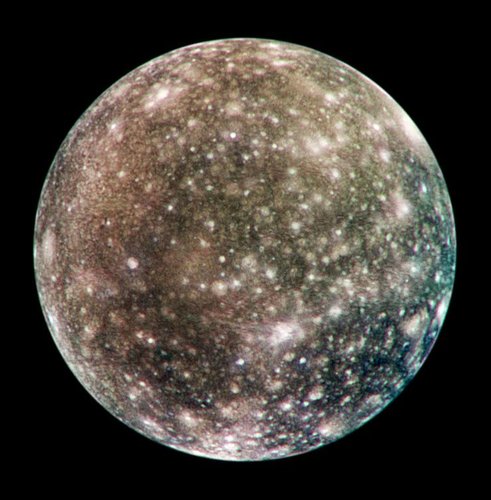Current Info for Observer
as of 04/24/2024 9:54 a.m.
Please login to view current observation details
General Info
as of 04/24/2024 9:54 a.m.
| Type | Moon |
| Constellation | None |
| Orbits | Jupiter |
| Right ascension | 3:21:57.43 (Hours) |
| Declination | 17:42:11.6 (Deg) |
| Mass | 0.018 ⊕ |
| Earth Visible | True |
| Offset (+E/-W)(+S/+N)(+front/-behind) | 21.07363 -6.21003 -14.65065 Jupiter radii |
Callisto | |
☉ Solar Masses ⊕ Earth Masses j Jupiter Masses
0.5 meter reflector telescope at BGSU (various lenses)
50 points
Orion XT8
50 points
50 points
Orion 10'' SkyQuest dobsonian
50 points
Viewed from Joshua Tree National Forest, along with Jupiter and the three other Galilean moons.
50 points
See notes for Jupiter.
With the Aid of an Ephemeris, I was able to Determine that the Medician Star to the West was Ganymede. Being Brighter than the others, that may have been why it was the Only one Visible in the Pollution of Light that was Present.
The Subordinate Stars on the East Side of the Planet from Jupiter outward were Io, Europa and Callisto.
Generate a finder chart
The following form will generate a PDF finder chart suitable for printing using to locate objects in the sky with your telescope!
The Date is only really useful for solar system objects, as deep space objects move measurably only on a galactic timescale.
The larger the F.O.V (field of view), the more "zoomed out" the object will appear. It can be helpful to print several charts of the same object with different field of views.
Limiting the magnitude (remember, lower magnitude means brighter!) of stars and objects can make sure your chart is not cluttered with dim objects that you may not be visible to you anyway. The defaults are good, but try experimenting with raising and lowering the values.
Please login to post comments
